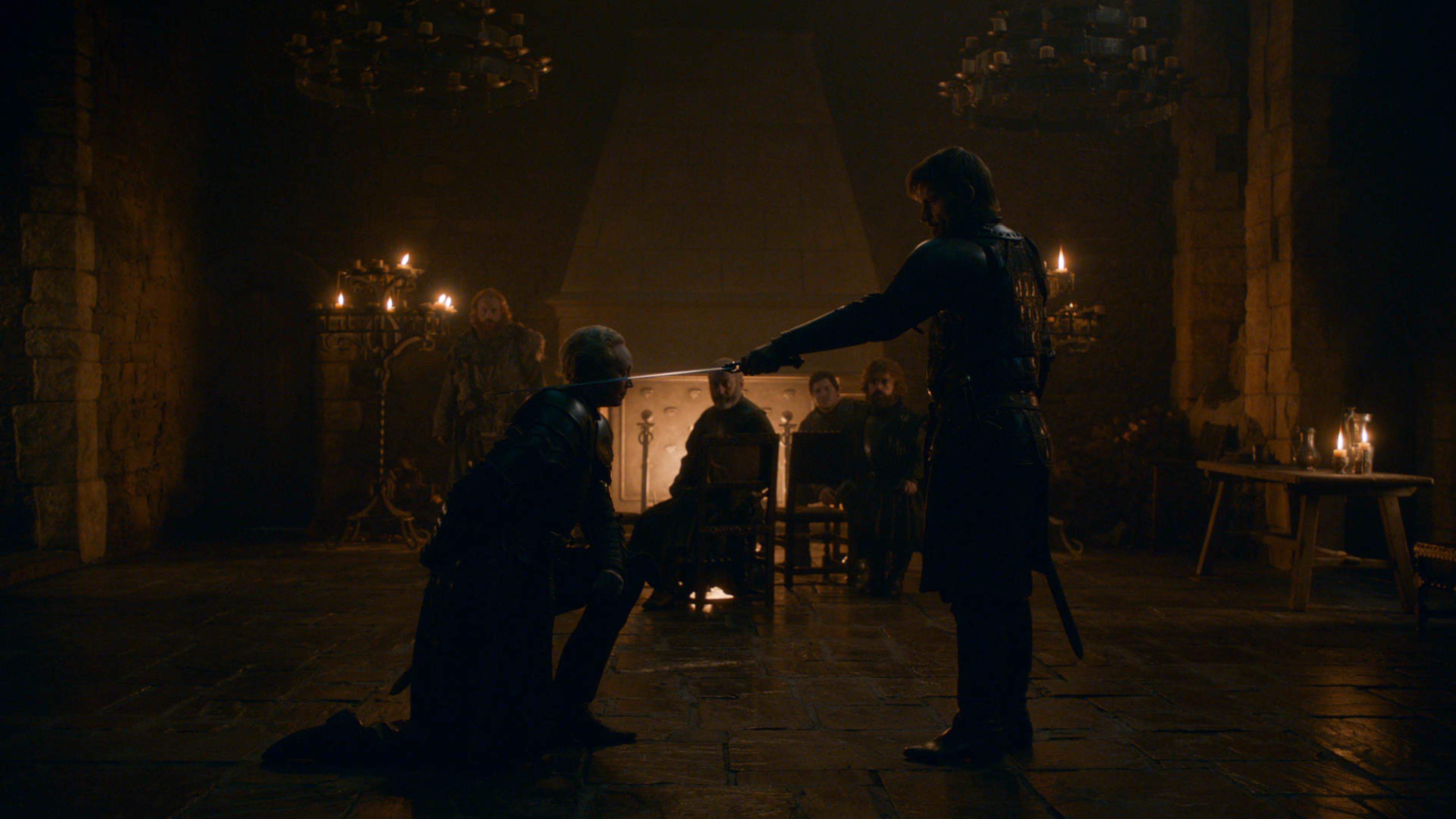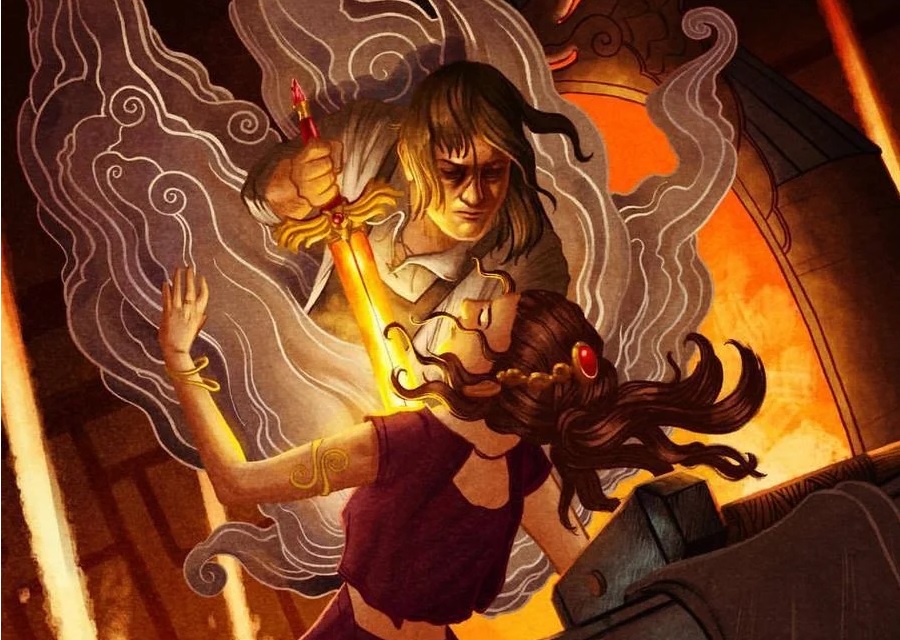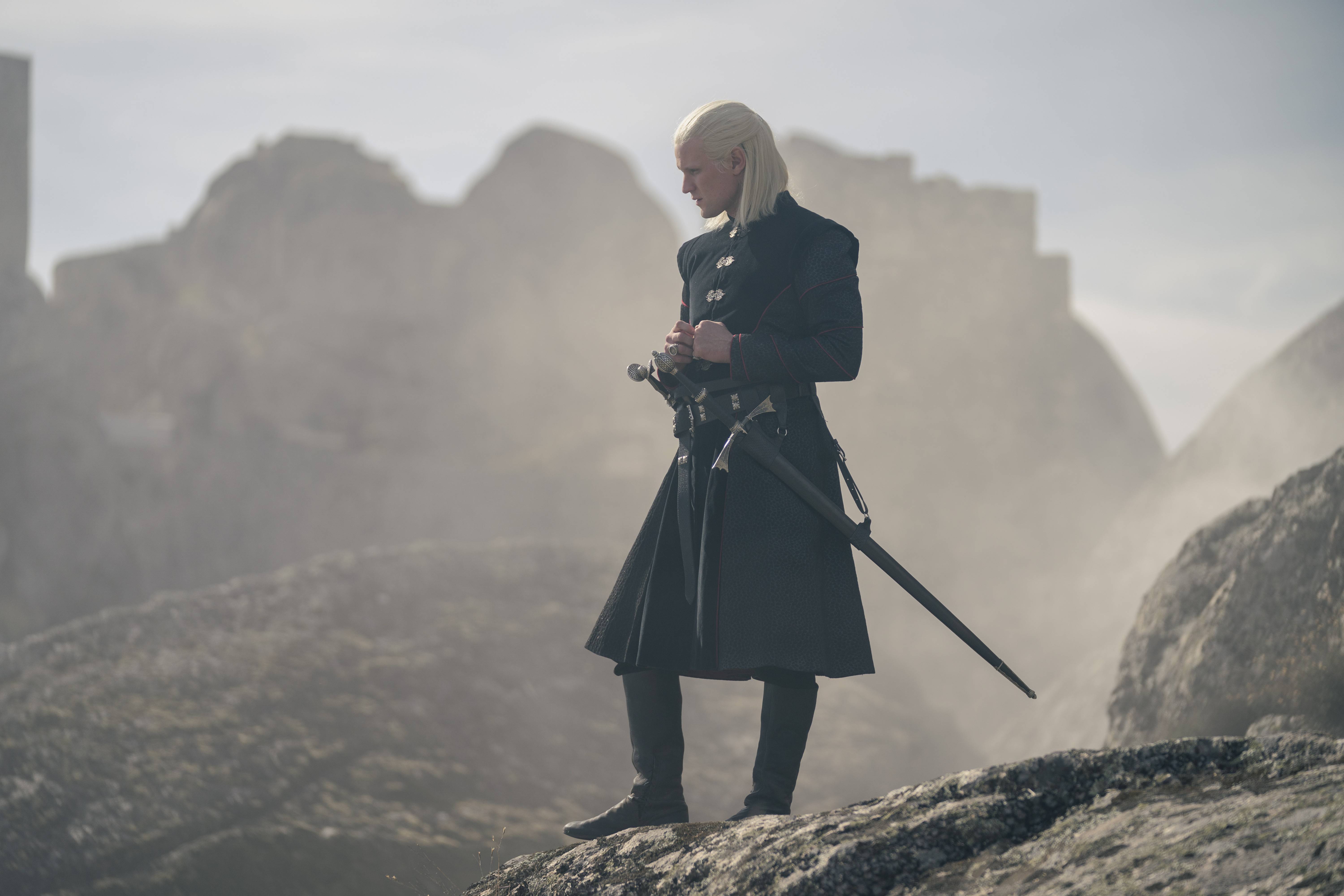
By Red Aly
Every mystery embedded in A Song of Ice and Fire offers rich ground for theories to germinate as we wait for the conclusion of the series. The best theories are community-building pursuits as they inspire animated discussion among fans and maintain interest between books and between seasons. There is only one rule here: Keep it fun! Be warned: This series may contain major book spoilers and is intended for people who have read all of the A Song of Ice and Fire books released so far, as well as Fire and Blood. Based on F&B, this article contains probable spoilers for future episodes/seasons of House of the Dragon.
In A Song of Ice and Fire, the fabled Valyrian steel swords are impossible to overlook. George R.R. Martin devotes pages to building up their backstory and all the key characters’ arcs are influenced in some way by them to the extent that they could be considered characters themselves. Yet they are mysterious. Their value is inseparable from the fact that no one knows how to make them anymore and so new ones cannot be made. They are priceless family heirlooms, their stories embedded in the stories of the preeminent families of Westeros. Furthermore, it seems that not only is Valyrian steel very rare and valuable, but it is necessary in the coming fight against the threat from the North; while ordinary steel shatters when it is used against White Walkers, Valyrian steel does not. This is therefore a crucial tension in the series.
Valyrian steel weapons are needed for fighting together on the same side in the same place, but they are instead spread across the continent and belong to people who are busy fighting each other. Maybe there is no need for further theories about them because already we can see how GRRM has woven the swords into the essential core of the series. This is after all a story that follows the Seven Kingdoms’ ruling families as they war amongst themselves and fail (so far) to come together to face more important existential threats. The family swords are perfect symbols of this.

But I, for one, like to speculate that there might be more to it. The myth of Azor Ahai and the forging of Lightbringer demands a closer look. Lightbringer is a step further than even priceless Valyrian steel, something truly wondrous. It is a detail that simply would not have been included in the series at all if not to provoke speculation. We, the readers, are expected to tie ourselves into knots just as the Priests of R’hllor and various Targaryens have done trying to figure out who the Prince that was Promised or Azor Ahai reborn might be, and what or where Lightbringer might be. The possibilities fans have proposed are endless, but all stem from one of these basic premises:
- Lightbringer is not a sword at all i.e.:
- A leader or hero
- Dragons
- A unifying idea
- Lightbringer is an existing ancient weapon that just needs heat and light added to make it truly special i.e. :
- Dawn
- Blackfyre
- Catspaw dagger
- Lightbringer is a sword that is forged in the series i.e.:
- Needle
- Something completely new
- Ice and its derivatives
From these premises a great number of theories are possible. I will devote the remainder of this article to just the last on the list for two reasons: First, because to me it ties together the best story threads in the most compelling way. And second, because it suggests a yet-to-be revealed reference to J.R.R. Tolkien’s shards of Narsil (from The Lord of the Rings) that does not seem accidental. The idea is that Lightbringer is a sword that does not yet exist but is being forged via the events of the story, eventually becoming a symbol of unity just as Andúril was. While it does not yet exist, it is being made from all or part of one that did: Ice.

Ice is, after all, the sword featured in the very first chapter. It caught our imaginations early and never let go. It was wielded by Ned Stark (played by the same actor who played Boromir in The Lord of the Rings!) and the red comet appeared in the sky just after it was used to kill him. It has been split into two swords (shattered!!) by this point in the story, however these swords seem to reject their new form; they will not hold the red dye and in spite of their ownership, neither one is or has ever been truly wielded by a Lannister or nominal Baratheon. But most importantly, Ice is the only candidate for Lightbringer that has a connection to nearly all of the characters contending for the role of Azor Ahai reborn. The only notable exception is of course Daenerys.
Whenever Lightbringer finally emerges from myth to influence the events of the main series there is no doubt that it is or will be something magical. GRRM never spells out exactly how magic works because he wants it to remain mysterious and unpredictable, but he does hint that there are elements that must come together for it to work. Regarding the swords, we know that the ancient Valyrians used blood magic and so it seems likely that the process of making Valyrian steel also involved blood magic. Furthermore, if Valyrian steel weapons have embedded blood magic then maybe it is not just because they are priceless that they are passed down in families, but because they are bound by blood. In other words, I suspect that it matters that Ned was killed using his own sword. I suspect it is relevant that Ilyn Payne, who killed him, may soon be involved in a fight against Brienne and Oathkeeper, which is, after all, one of the “shards” of Ice.
The original Lightbringer was the sword of legendary hero Azor Ahai. According to the story he labored for 30 days and 30 nights on his first attempt but when he tempered the sword with water it shattered. Ice itself may not have shattered when Ned executed the Night’s Watch deserter and then cleaned the sword in the pools of Winterfell, but his family certainly began to break apart from that moment and these ancestral swords are symbols of their families. Arya and Sansa’s relationship with each other and with Ned grew bitter after Ned was forced to kill Sansa’s direwolf Lady using Ice. Even assuming the theory is true then, it is impossible to be confident of where exactly we are in the forging and tempering process. Still, there is no doubt that the splitting of Ice resembles a shattering both physically and symbolically.
Ice has been split only once, which means it may see a second “shattering”. After all, in the myth, Lightbringer was created on the third attempt after both the first and second attempts shattered. As the split of Ice was symbolic of the destruction of the Stark family, let us consider that a second shattering could be symbolic of the devastation of the Baratheon-Lannister royal family who now claim these swords. The story implications are certainly interesting. Indeed, the trajectory the Lannisters are on at the end of A Dance with Dragons suggests fragmentation and impending doom for several of them. Tyrion killed Tywin and is on the other side of the world. Jaime was ignoring Cersei’s letters before being captured in the Riverlands. Myrcella is on a dangerous trip back to King’s Landing from Dorne, past lands occupied by Aegon and accompanied by some who do not wish her well. Cersei is a prisoner of the Faith, while Tommen is loyal to her enemies. All it would take is for any one of them to be killed with a “shard” of Ice and the pattern would be established.
Maybe then we should consider that Joffrey’s use of Widow’s Wail to demolish “the Lives of Four Kings” might actually be foreshadowing of the eventual use of this sword for regicide.

There is a final complicating factor to consider of course, and that is the question of how the Targaryens figure into this. After all, this discussion of the “shards” of Ice does not yet touch the Targaryens or fully account for why Ice would be more special in the end than the historic swords that for hundreds of years symbolized the royal dynasty of Westeros. Dark Sister and Blackfyre have yet to make confirmed appearances in the main series, yet their importance in Westerosi history is clear. I have suggested that we may see a second splitting of Ice, but maybe the division of Ice into Widow’s Wail and Oathkeeper was already the second shattering, and the first was the splitting of Blackfyre and Dark Sister, along with all of the internal strife during the Targaryen age that was associated with those two swords. Many fans believe that Blackfyre in on its way to Aegon. Some speculate that Dark Sister may be hiding in plain sight as Longclaw, or that it is entombed with Lyanna Stark in Winterfell’s crypts – either way destined for the hands of Jon Snow. None of this can be confirmed yet. We can, however, note that the histories contain many interesting details such as Bloodraven as the last known wielder of Dark Sister, his rival Bittersteel as the last known wielder of Blackfyre, and the fact that Daemon Targaryen used Dark Sister to kill Aemond Targaryen in the Dance. The association of these two swords with a long, drawn out “shattering” of the Targaryen family is well established.
I would venture to suggest, therefore, that while GRRM’s version of Andúril may turn out to be Ice put back together again just as the shards of Narsil were, it seems more likely that this is all headed in a different direction. This is a song of Ice and Fire, after all, not just Ice. The process of bringing these contrasting elements together has been long and difficult, full of tragedy, and that makes it all the more rewarding when it finally happens. The unifying symbolic weight of a reforged sword is more earned if it truly does represent the coming together of the Kingdoms: A sword for a new era, forged from one shard of Ice, and a spark of fire.
Whatever your take on it, the myth of Lightbringer is compelling stuff. To me the idea that a new forging story is woven into the series and that what will be Lightbringer is deeply connected as an artifact to many, or all of the principal characters, is exciting and rich ground on which to base predictions of where the series is headed. I also like the idea that even if it is a new sword, it is one that was made from old ones, complementing the way the series weaves history and present and conceiving of time as a repeating but mutable pattern.
The post Look Into the Flames: Swords and Shards appeared first on Watchers on the Wall.
Via http://watchersonthewall.com
No comments:
Post a Comment